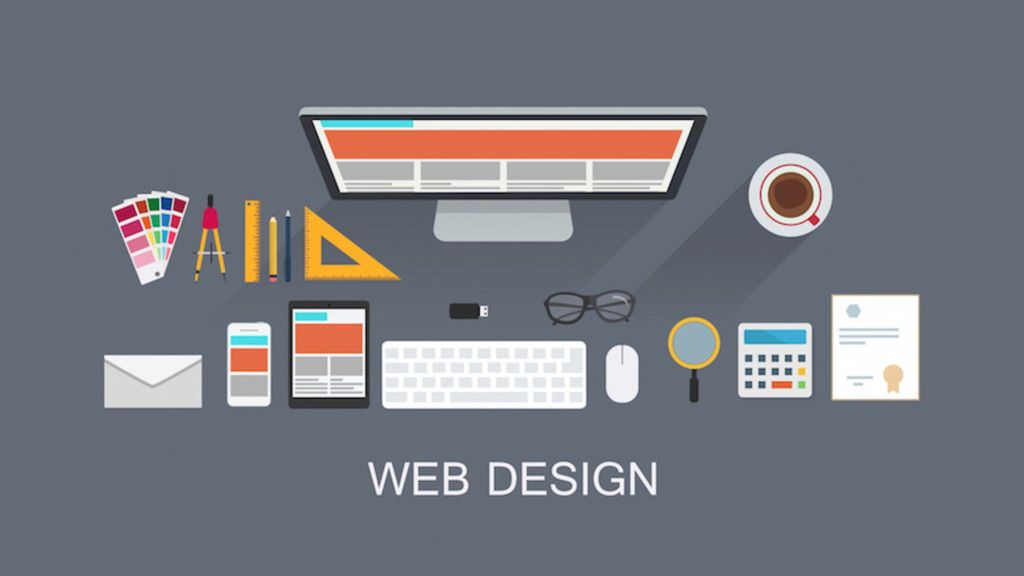Web design is a dynamic field that requires a harmonious blend of creativity, user-centric thinking, and technical expertise. A well-designed website not only captivates users visually but also provides a seamless and enjoyable experience. In this comprehensive article, we will explore the fundamental principles and techniques that form the foundation of effective web design.

Basic Web Design Principles
Here are the important web designing principles
1. Visual Hierarchy
Visual hierarchy is the arrangement of elements on a web page in a way that guides the user’s attention and emphasizes the importance of various elements. It helps users understand the content’s structure and makes it easier for them to navigate the site. Designers achieve visual hierarchy through the use of size, color, contrast, typography, and positioning. For example, important content is often placed at the top of the page or presented with larger fonts and contrasting colors.
2. Simplicity and Minimalism
Simplicity and minimalism involve removing unnecessary elements and focusing on essential content. By using a clean and uncluttered design, designers ensure that users can quickly understand the website’s purpose and navigate without distractions. Minimalistic designs often feature ample white space, simple color palettes, and streamlined layouts.
3. Consistency and Unity
Consistency ensures that design elements remain the same across different pages and sections of the website. Designers use consistent colors, typography, and layouts to create a unified visual identity. Unity ties these elements together, creating a sense of cohesion and making the website feel like a cohesive whole.
4. Typography
Typography choices impact readability and aesthetics. Designers select fonts that align with the website’s tone and message. Consideration of font size, line spacing, and font styles ensures that text is legible and visually appealing on various devices.
5. Color Theory
Colors evoke emotions and convey meaning. Designers choose color palettes that resonate with the website’s purpose and target audience. For example, warm colors like red and orange can create a sense of urgency or excitement, while cooler tones like blue and green evoke calmness and trust.
6. Mobile Responsiveness
Mobile responsiveness ensures that a website functions well on smartphones and tablets. Designers use flexible layouts and media queries to adapt the design to different screen sizes. This principle enhances user experience by providing a seamless and optimized browsing experience on any device.
7. User-Centered Design
User-centered design focuses on understanding user needs and preferences. Designers conduct user research, create user personas, and perform usability testing to tailor the design to user expectations. This approach results in websites that are intuitive, efficient, and user-friendly.

8. Accessibility
Web accessibility ensures that people with disabilities can access and use a website. Designers follow guidelines such as providing alt text for images, creating keyboard-friendly navigation, and ensuring compatibility with screen readers. Accessibility principles promote inclusivity and make the web accessible to a wider audience.
9. Loading Speed
Loading speed affects user satisfaction and retention. Designers optimize images and use efficient coding practices to reduce loading times. Fast-loading websites provide a smoother user experience and improve overall site performance.
10. Feedback and Interactivity
Interactive elements engage users and provide feedback as they interact with the website. Designers use visual cues, hover effects, and animations to guide users and enhance their interactions. Well-designed interactive elements create a dynamic and engaging user experience.
11. Focused and Clear Call to Action (CTA)
A call to action is a crucial element in web design that prompts users to take a specific action, such as signing up for a newsletter, making a purchase, or contacting the business. Designers should create clear and compelling CTAs that stand out from other elements on the page. Effective CTAs are visually prominent, use persuasive language, and guide users toward the desired goal.
12. Negative Space (Whitespace)
Negative space refers to the empty or blank areas around design elements. It provides breathing room for content and helps improve readability and visual clarity. Proper use of negative space can enhance the overall aesthetics of a website, draw attention to important elements, and create a sense of balance in the design.
13. Grid Layouts
Grid layouts involve organizing content into a structured grid system. This approach ensures consistency in spacing, alignment, and placement of elements across different sections of the website. Grid layouts help maintain visual harmony, streamline design updates, and contribute to a more organized and professional appearance.

14. Storytelling through Visuals
Incorporating visuals, such as images, videos, and graphics, can help tell a compelling story and create an emotional connection with users. Visual storytelling engages visitors on a deeper level, making the website more memorable and impactful. Designers should select visuals that align with the website’s message and evoke the desired emotions.
15. Scalable Vector Graphics (SVGs)
SVGs are a versatile and lightweight format for images and graphics. They can be scaled to any size without loss of quality, making them ideal for responsive design. SVGs can be animated, manipulated with CSS, and provide a high level of detail, enhancing the visual appeal and interactivity of a website.
16. Depth and Material Design
Depth is a design technique that adds layers and shadows to elements, creating a sense of depth and realism. Material design, developed by Google, emphasizes the use of depth, motion, and tactile interactions to mimic real-world objects. Incorporating depth and material design principles adds a tactile and interactive quality to the user experience.
17. Gestalt Principles
Gestalt principles are psychological principles that explain how humans perceive and organize visual elements. These principles include concepts like proximity (elements close to each other are perceived as a group), similarity (similar elements are grouped together), and closure (the brain fills in missing parts of incomplete objects). Understanding and applying gestalt principles can help designers create visually cohesive and intuitive designs.
18. Parallax Scrolling
Parallax scrolling involves creating an illusion of depth by moving background and foreground elements at different speeds as the user scrolls. This technique adds a dynamic and interactive element to the website, enhancing user engagement and providing a memorable browsing experience.
19. Emotional Design
Emotional design focuses on creating an emotional connection between users and the website. By incorporating elements that evoke specific emotions, designers can elicit positive feelings and a sense of resonance with visitors. Emotional design enhances user engagement, encourages repeat visits, and fosters brand loyalty.
20. A/B Testing and Data-Driven Design
A/B testing involves comparing two versions of a webpage to determine which one performs better in terms of user engagement and conversions. Data-driven design relies on user analytics and feedback to make informed design decisions. By continuously testing and analyzing different design elements, designers can optimize the user experience and achieve better results over time.

Summary of Web Design Principles
Mastering the principles and techniques of web design is a journey that requires a deep understanding of user needs, aesthetics, and technical considerations. By embracing these principles, designers can create websites that are not only visually appealing but also intuitive, accessible, and capable of delivering exceptional user experiences. As the digital landscape continues to evolve, the importance of effective web design remains steadfast in shaping the way we interact with the online world.
Useful Links:
https://blog.adobe.com/en/publish/2017/10/03/functional-minimalism-for-web-design-2
https://www.webdesigncochin.in/how-to-create-a-landing-page-that-converts/
https://yoast.com/what-makes-a-good-website/
https://www.pixelsolvent.com/wordpress-development-company-india/